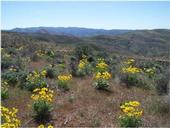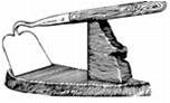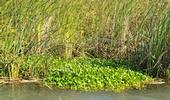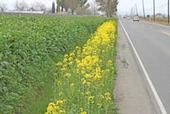- Posted By: Brad Hanson
- Written by: reposted from EBIPM.org and the Western Society of Weed Science

Reposting of an announcement for a Field School sponsored by the Western Society of Weed Science. This is not a UC Field School but may be of broad interest to western landmanagers fighting invasive weeds.
The informational flyer can be found here: http://sfc.smallfarmcentral.com/dynamic_content/uploadfiles/152/flyer%20for%20website.pdf
2011 EBIPM Field School - Park Valley, Utah
|
Sponsored by the Western Society of Weed... |
- Posted By: Brad Hanson
- Written by: Smith, Roncoroni, Blodget, Blankinship, Tjosvold, Fennimore

This week we are finalizing plans for the 55th Annual UC Davis Weed Day on July 14th. It's not too late to register if you are interested in a sampling of the current weed science research at UCD! More info and registration information on Weed Day can be found here: http://wric.ucdavis.edu/events/weed_day_2011.htm
We've been busy this getting the agenda finished, spraying a few last herbicide treatments, and working out the many logistic details (thanks Gale P. for her focus on logistics!). I was thinking about what (and when) I'd post on the blog this week and, voila, the California Weed Science Society...
- Author: Lars Anderson

Since the early 1980s, the California Department of Boating and Waterways (BWW) has been increasingly successful in managing two invasive aquatic weeds in the Sacrament-San Joaquin Delta: water hyacinth (Eichhornia crassipes) and Brazilian waterweed (Egeria densa). Now, over the past few years, a new threat has emerged: South American Spongeplant (Limnobium laevigatum). A native of South America, Central America and Central Mexico (as the name implies), this is a prolific, floating, flowering plant in the “frogbit” family (Hydrocharitaceae).
Spongeplant infestations were first found in 2003 in small ponds in Redding and Arcata, CA, but more was discovered in the San Joaquin River by CDFA and...
- Posted By: Brad Hanson
- Written by: Anil Shrestha, Kurt Hembree, and Steven Wright

Someone asked me a question this morning about management option for hairy fleabane and it reminded me of a nice publication that Anil, Kurt, and Steve put together a couple years ago. See ANR Publication 8314 here: http://ucanr.org/freepubs/docs/8314.pdf It is also attached as a pdf at the bottom of this post.
These two weeds have been around for a long time but are becoming more widespread throughout the Central Valley and other parts of California in large part due to the selection of glyphosate-resistant biotypes. Both weeds are early invaders of disturbed areas but do not tolerate too much additional tillage because the seedling do not emerge from very...
- Author: Brad Hanson

There is a lot of information out there! While looking for something else, I ran across a Western Farm Press article from last fall about Roundup Ready canola growing on roadsides etc. I've heard Doug Munier talk about this issue and I'm sure many of you have too. I though Harry Kline did a nice job of summarizing the issue so I thought I'd revisit it today.
The article can be found here: http://westernfarmpress.com/management/rr-canola-evolves-vexing-weed
Several years ago, Doug Munier (UCCE in Glenn Co) and Kent Brittan (UCCE in Yolo Co) were part of a team testing canola as an alternative crop in California -...


